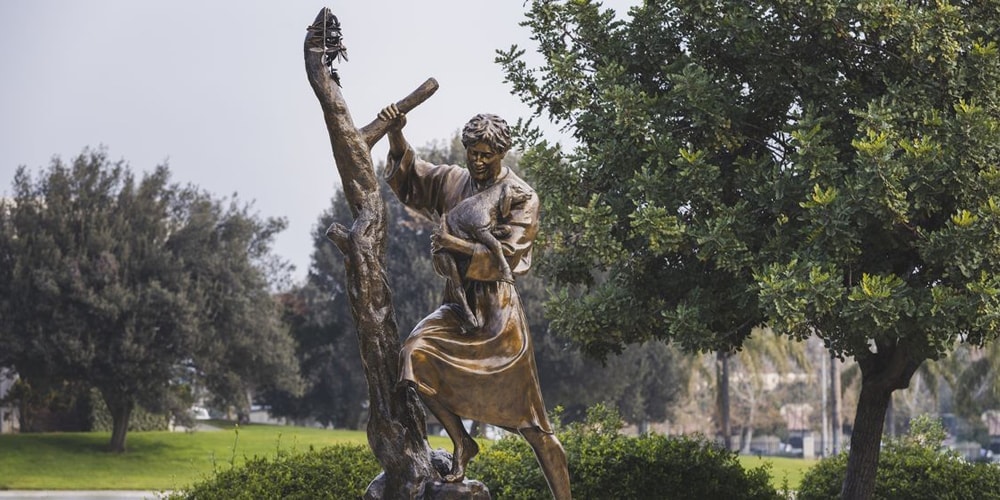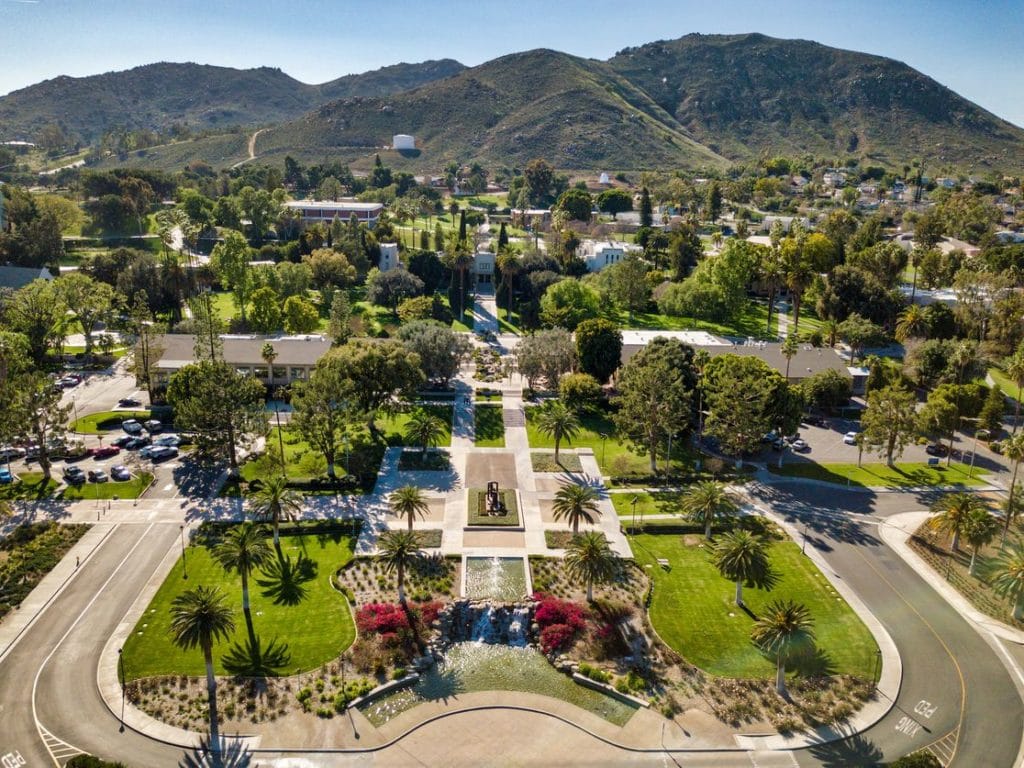
La Sierra University celebrates its remarkable and arduous beginnings in 1922 and its metamorphic growth over the ensuing century with a yearlong series of 100th anniversary events, beginning February 2022.
The university’s celebrations begin February 15 with a Centennial Launch and Sculpture Dedication to commemorate the arrival of a new sculpture on campus. Titled “The Lost Sheep” and sculpted by Victor Issa, it is the third and final piece in a sculpture series illustrating biblical parables that portray God’s grace and compassion for humanity. The event was originally planned for January 18 but was rescheduled as the university moved operations online during January amid the Covid-19 pandemic surge. In-person operations resumed January 31.

Additional centennial festivities will take place during alumni weekend April 29 and 30, with events capped by a Centennial Gala scheduled for October 3 at the Riverside Convention Center. The latter date is known as Founders’ Day due to the school’s opening on October 3, 1922 as La Sierra Academy. A collaborative book written by La Sierra faculty members about the university’s history will be released for the gala.
All four presidents who have shepherded the institution since its official designation as a university in 1990 will attend the February sculpture dedication and launch event. These are current president Joy Fehr, La Sierra’s first female president who is two and a half years into her tenure; former presidents Randal Wisbey, who led the university between 2007 and 2019; Lawrence T. Geraty, who served from 1993 to 2007; and Fritz Guy, who presided from 1990–93.
“The Lost Sheep” follows the installation in April 2017 of another biblical parable sculpture, also created by Issa, called “The Lost Coin.” Issa will also attend the dedication event. The first sculpture in the series was created in 2002 by the late Alan Collins, a former La Sierra University art teacher and noted sculptor. Titled “The Glory of God’s Grace,” it depicts the parable of the prodigal son.
The Hwang and Toh families contributed the new sculpture in memory of their family members who dedicated their lives in service to others.
Beginnings of La Sierra
The idea to build a Seventh-day Adventist college in the rural inland region took shape more than 100 years ago. Formal plans ensued when in 1922, constituents of the Southeastern and Southern California Seventh-day Adventist conferences voted to develop a new farm-supported academy.
That decision paved the way for the purchase of just over 316 acres (128 hectares) in the town of La Sierra, previously part of Rancho La Sierra, a Mexican land grant. Construction began in the summer of 1922, bolstered by support from the Riverside civic community, private contributions, and many volunteers. In the first chapter of the book about the school’s history, La Sierra University Associate History Professor Katherine Koh noted an advertisement in the July 1922 edition of the Pacific Union Recorder that called for women to join an association to raise funds, can food, and create furnishings for the new school.
Classes began with 84 students on October 3, 1922. Conditions were initially less than ideal — students endured scorching heat and no electricity, some students had to climb ladders to access dorm rooms, and sand blew in through unfinished construction.

“A community with a sense of history was established on what was previously a watermelon patch. This community was ultimately strong enough to survive both the Great Depression and the bloodiest war in the world’s history,” Koh wrote. In 1927 the campus became a junior college and in 1946 it was accredited as a four-year liberal arts college. In 1990 La Sierra was reorganized as a university following a separation from Loma Linda University under which it had operated as its College of Arts and Science since 1967.
Now a nationally-acclaimed institution, La Sierra University’s faculty, the majority of whom hold PhDs, teach nearly 2,000 students from around the United States and more than 50 countries. Located in the middle of campus, the watermelon patch eventually became the current park-like expanse known as Founders’ Green, which is lined by the university’s early buildings and shaded by towering fan palms and sprawling Chinese elms.
The original version of this story was posted by La Sierra University.